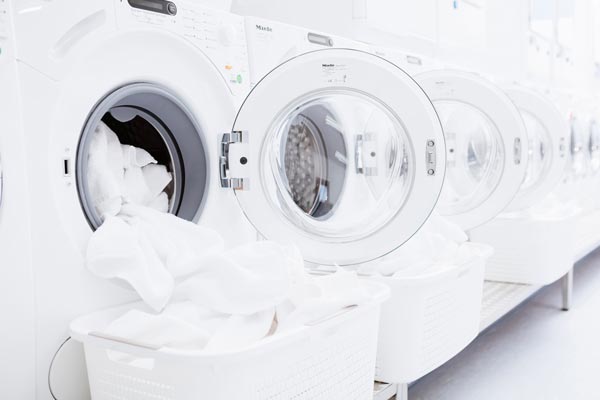Suitable Applications:
- Heavy-duty, color and mild wash detergents (powder, tablets or liquid products)
- Descaling products (powder, tablets or liquid products)
- Booster products (e.g. stain salts, pretreatment products)
- Color or dirt catcher sheets
In our well-equipped household laundry technology facilities, our specialists test the cleaning effect, primary and secondary washing effects, labeling conformity, disinfection and effect on the washed item.



Many of our investigations are conducted as comparative product tests - objective performance comparisons of defined characteristics against at at least one reference product.
Hohenstein emphasizes practical test design for real-life conditions and considers current regulations and standards. The reference product can be a previous model of your product or another product for competitive benchmarking.

In addition to their cleaning effect, an important performance characteristic of detergents is whether - and to what extent - undesirable odors remain in the textiles after washing. We assess detergent products, such as powders, liquid detergents or gel caps, for how much they reduce or completely prevent sweat odor.

Where germ-contaminated textiles cannot be hygienically cleaned by high-temperature washing or other household remedies, laundry disinfectants and hygienic rinsers can help to prevent pathogens from spreading, even at low temperatures (68 to 104°F).
We offer a standardized test procedure (DIN EN 17658:2022-11) that independently evaluates the disinfecting effect of detergents and rinsers for domestic use. Our simulation test of a common household laundering considers the disinfection performance of a product - with separate data for the wash and rinse cycles.
Our test method is also suitable for evaluating biocidal detergents for their ability to prevent odors or aesthetic impairment caused by microorganisms.
